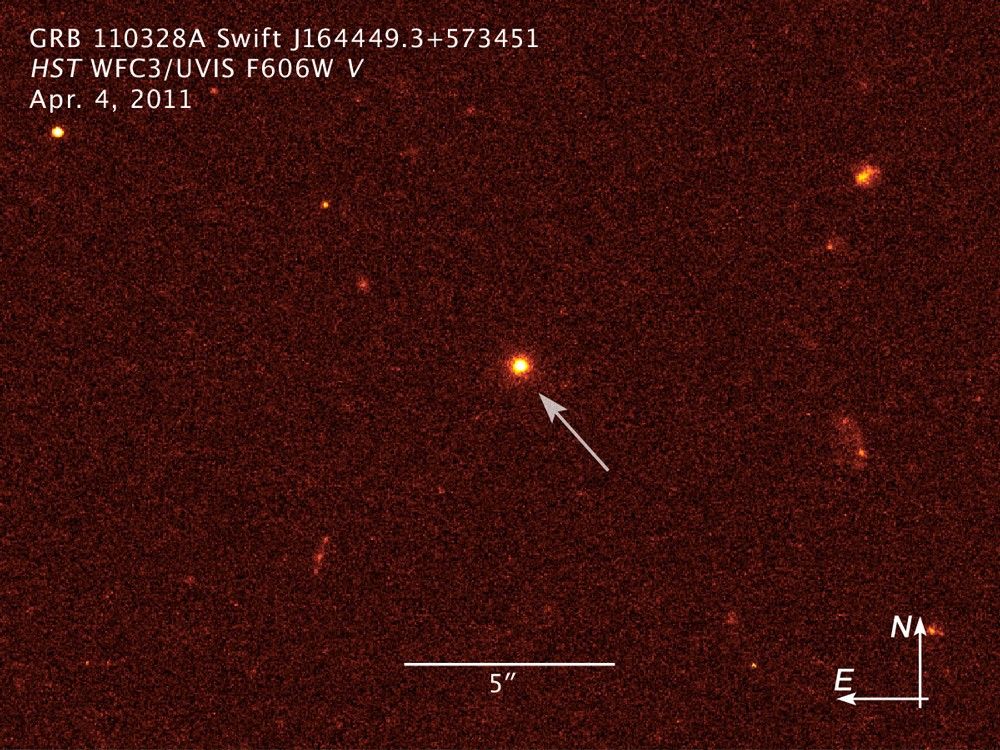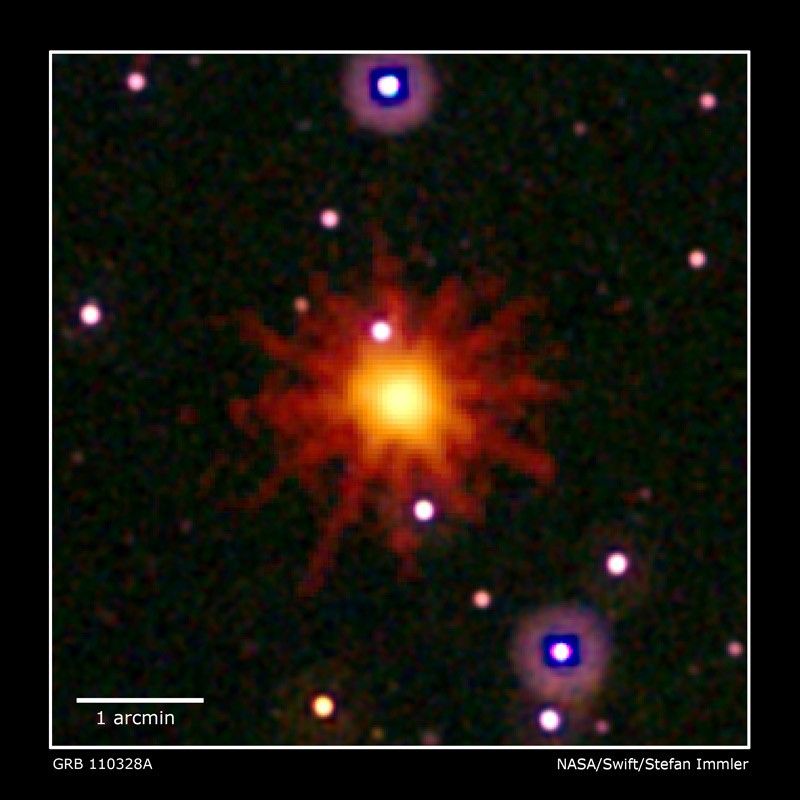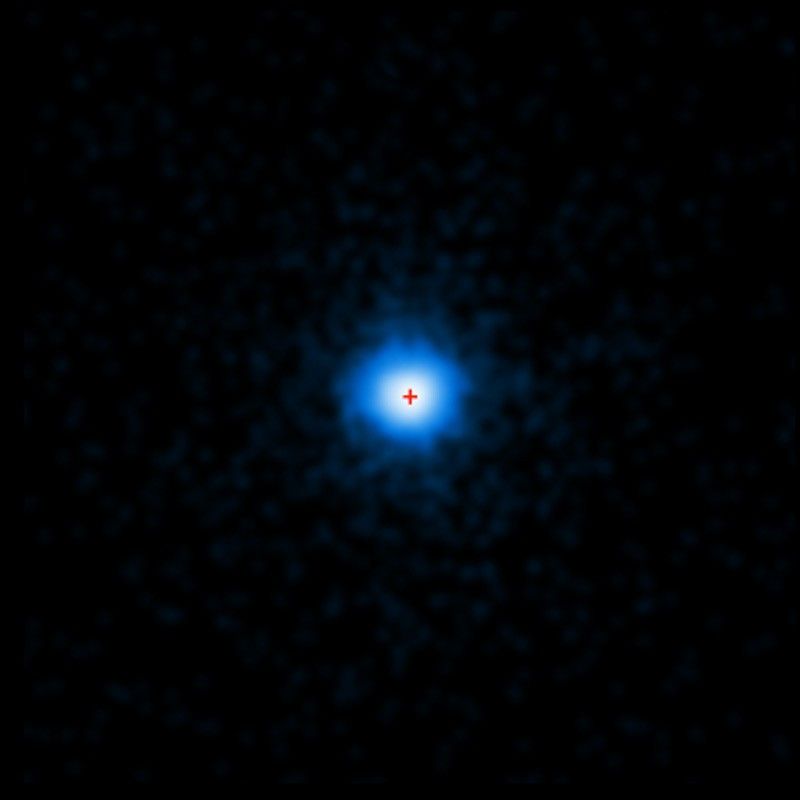1 min read
NASA Telescopes Join Forces to Observe Unprecedented String of High-energy Outbursts
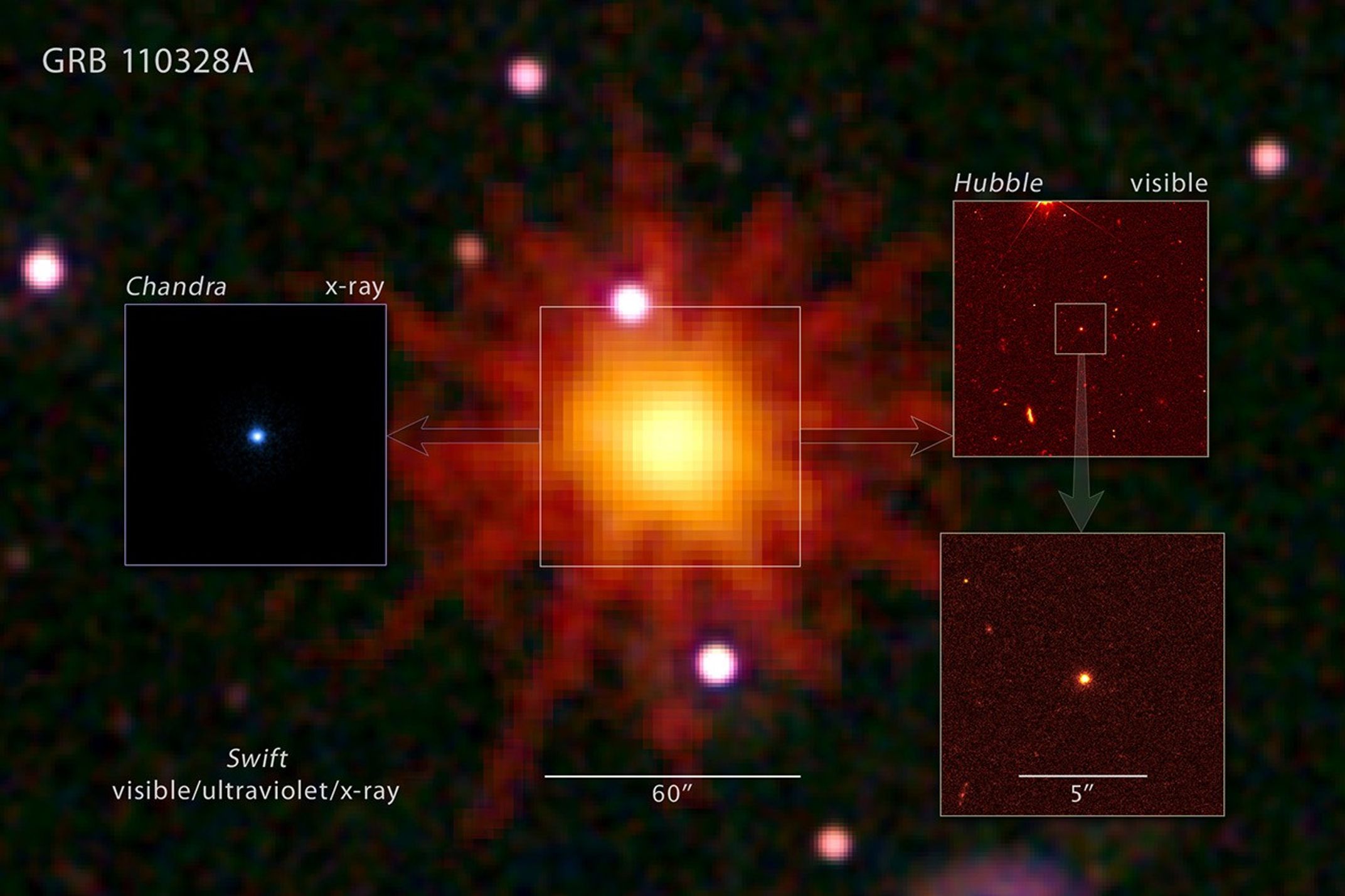
This mosaic image illustrates how NASA's Swift satellite, Hubble Space Telescope, and Chandra X-ray Observatory teamed up to study one of the most puzzling series of cosmic blasts ever observed.
On March 28, 2011, Swift's Burst Alert Telescope discovered the source of rapid gamma-ray and X-ray emissions flaring up in the direction of the constellation Draco. It was cataloged as GRB 110328A. (The orange starburst pattern is an artifact of Swift's imaging system.)
Hubble's high resolution was used to pinpoint the source of the explosions at the center of a dwarf galaxy, which lies 3.8 billion light-years away from Earth. These observations were made on April 4.
On April 4, a Chandra X-ray image located the X-ray source 10 times more precisely than Swift did. The data show that the source lies at the center of the galaxy Hubble imaged.
These combined data support the hypothesis that the extraordinary and unusual blasts likely arose when a star wandered too close to its galaxy's central black hole. Intense tidal forces tore the star apart, and the infalling gas continues to stream toward the hole. According to this model, the spinning black hole formed an outflowing jet along its rotational axis. A powerful blast of X-rays and gamma rays is seen when the jet is pointed in our direction.
- Release DateApril 7, 2011
- Science ReleaseNASA Telescopes Join Forces to Observe Unprecedented Explosion
- Credit
Related Images & Videos
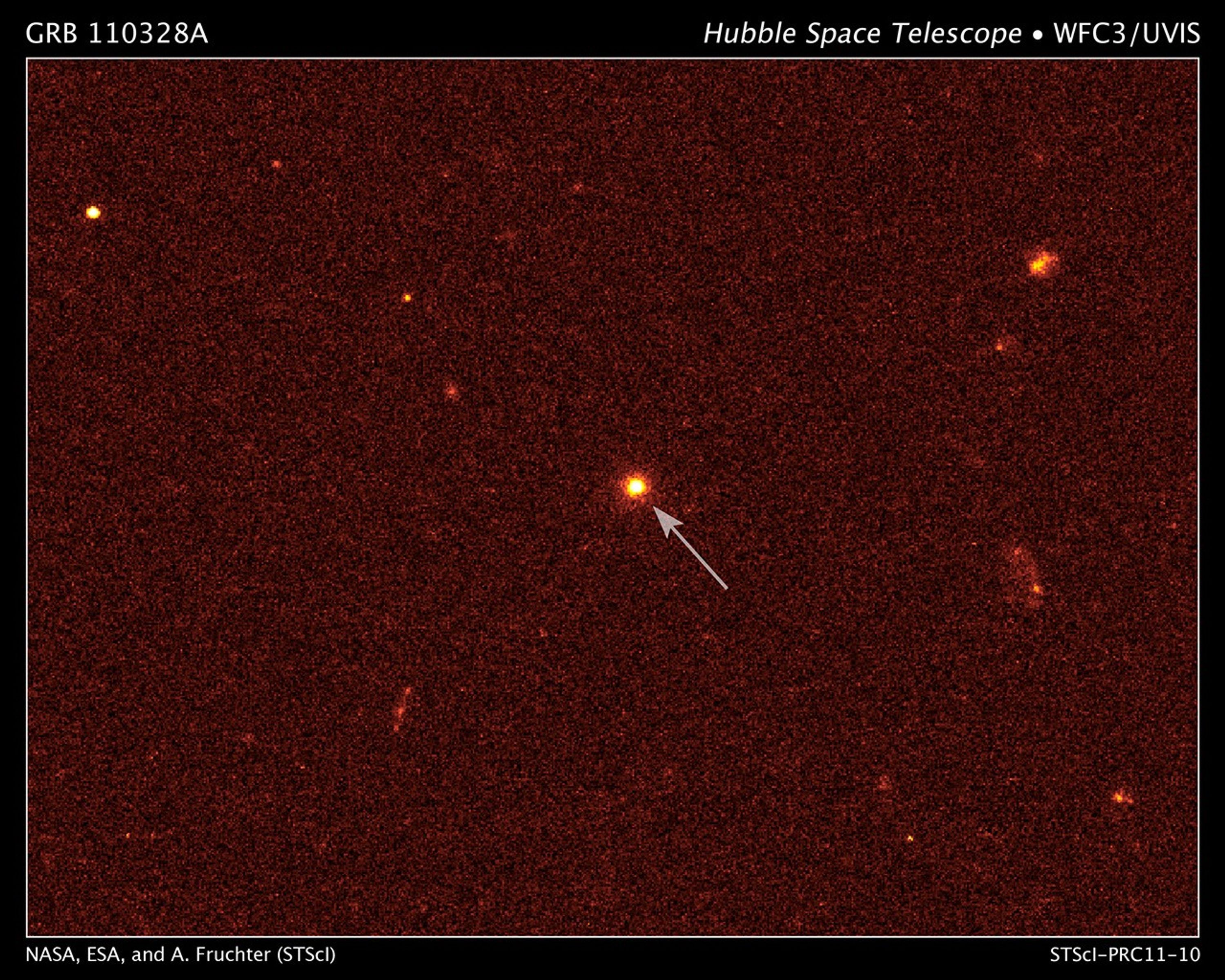
Hubble Pinpoints Source of Mysterious Outbursts
NASA's Hubble Space Telescope has pinpointed the source of one of the most puzzling blasts of high-energy radiation ever observed. It is at the very center of a small, distant galaxy, which appears to be sending a beam of radiation directly toward Earth. The...

Black Hole Eats Star (Annotated)
This diagram illustrates a possible explanation for a series of intense bursts of energy seen by the NASA Swift satellite's Burst Alert Telescope on March 28, 2011. Subsequent Hubble Space Telescope observations showed that the blasts originated from the center of a dwarf...
Share
Details
Claire Andreoli
NASA’s Goddard Space Flight Center
Greenbelt, Maryland
claire.andreoli@nasa.gov





























